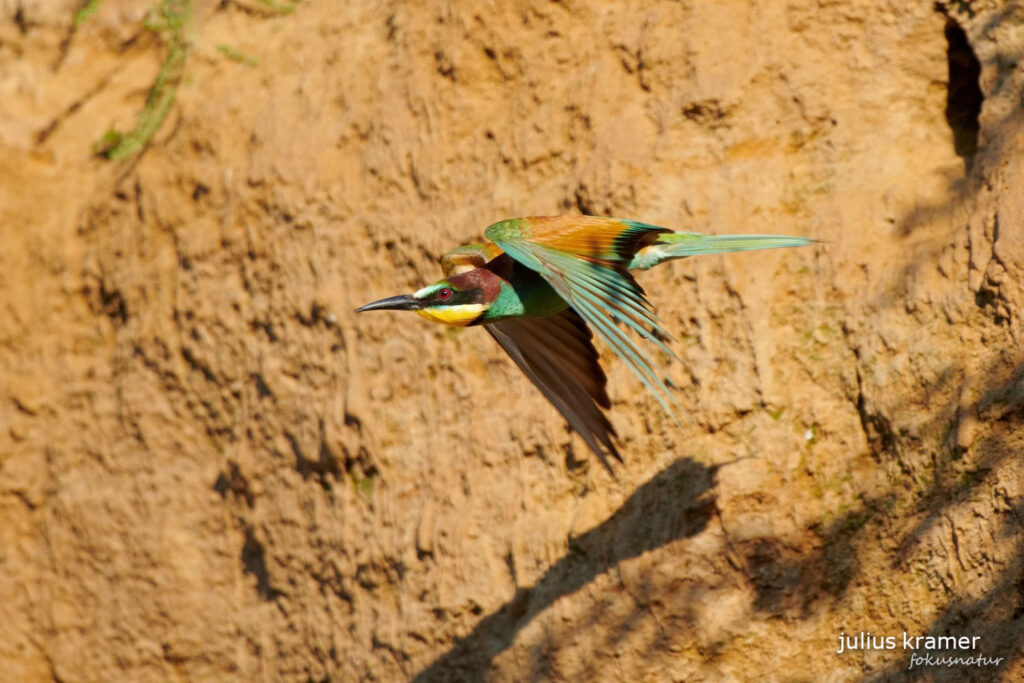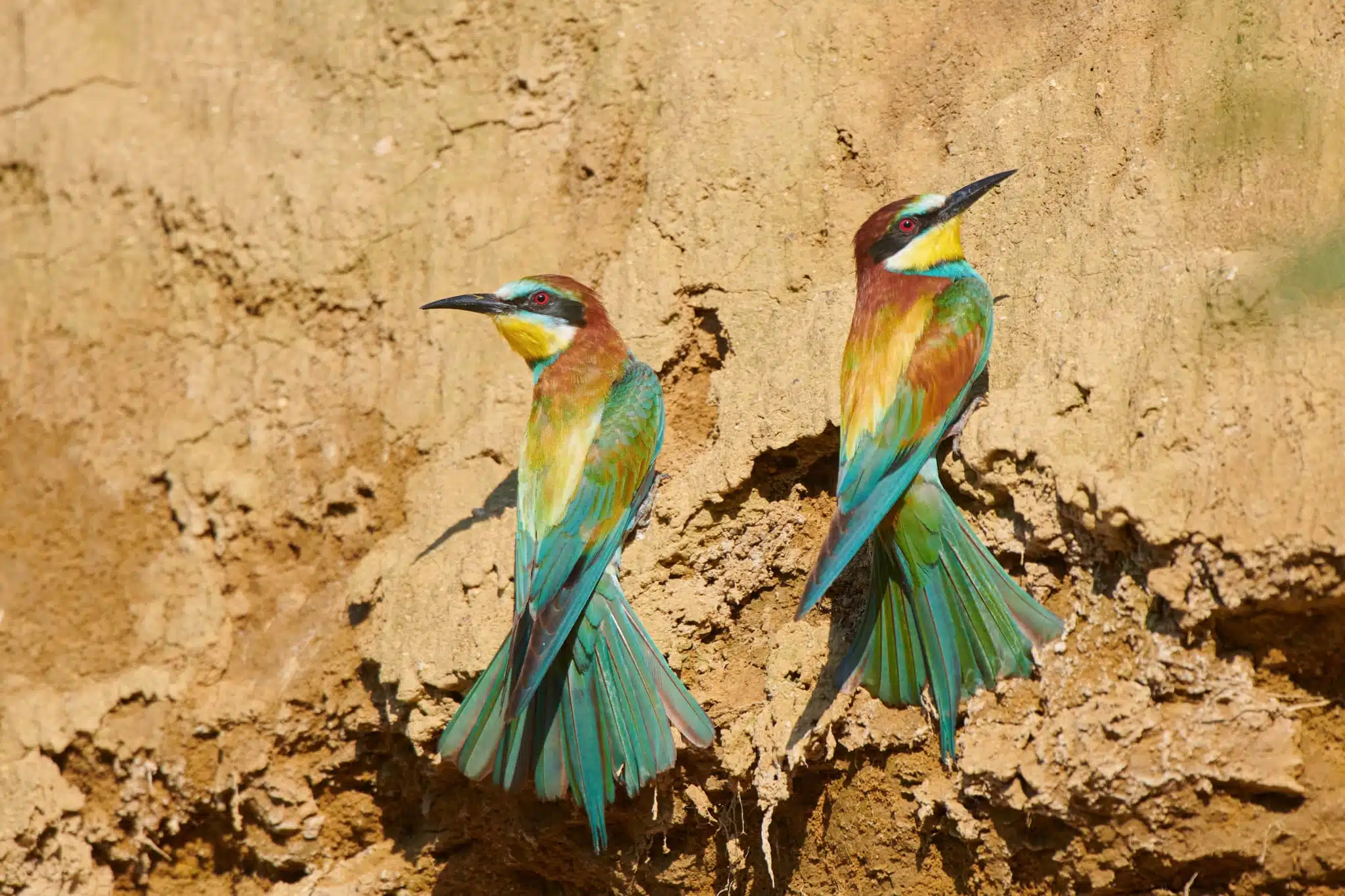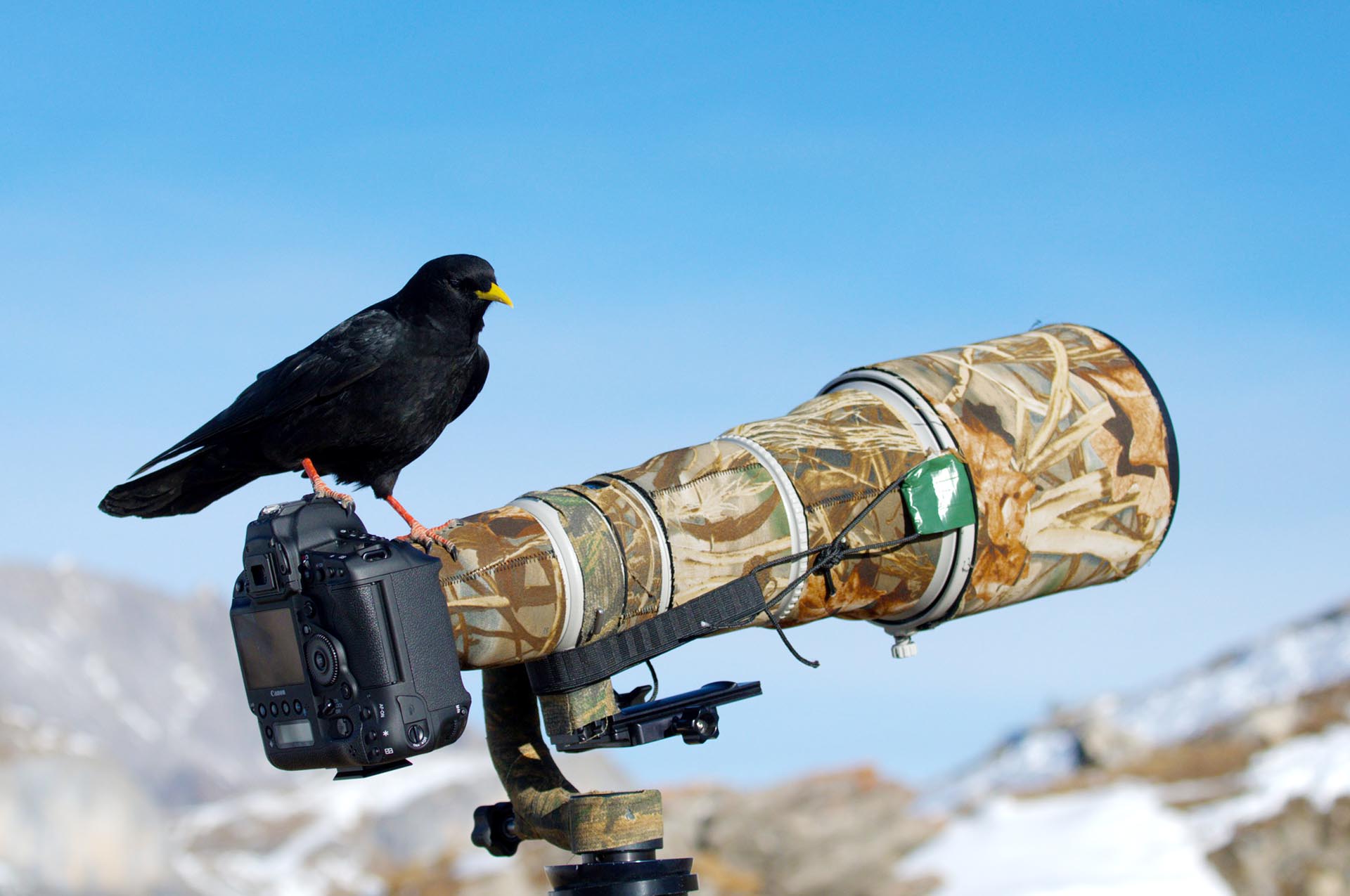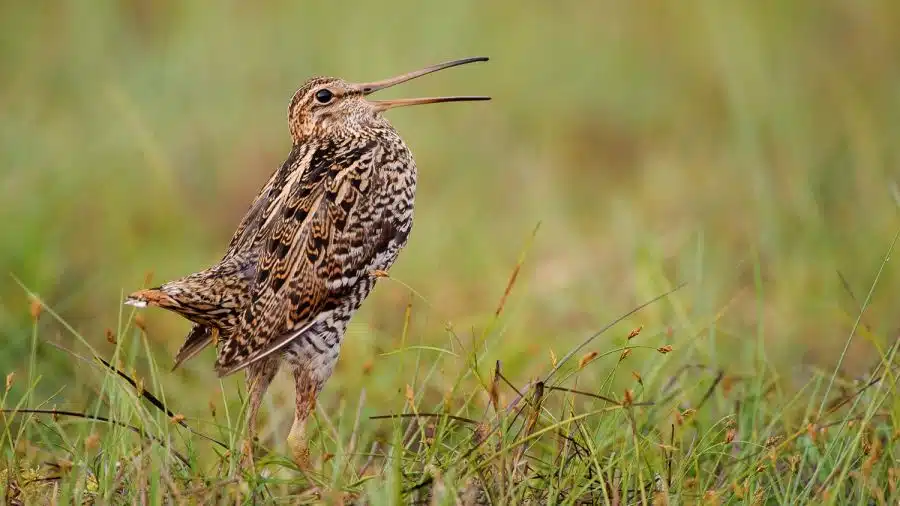The sun is blazing down on the banks of the Danube as I set up my camera on the tripod on an early July day. In the shimmering heat, the contours of the distant rows of trees become blurred and a shimmering silence hangs over the landscape. Suddenly, a shrill call cuts through the air – a sound I know well. I instinctively reach for the telephoto lens and scan the sky. And there they are: a dazzlingly colorful pair of birds, darting across the sky. Bee-eaters. These colorful returnees to the Bavarian river landscape are particularly active on this day – and I am right in the middle of it, in a moment that never ceases to amaze me.

Join me on my photo tours and immerse yourself in the world of wild landscapes and unique encounters. Together we will hone your photographic skills – practical, creative and full of inspiration. Secure your place now and rediscover the magic of light and nature.
Return of a southern guest to Bavaria
Just a few decades ago, it was considered a sensation to find bee-eaters (Merops apiaster) in Bavaria. For a long time, the heat-loving birds had only been seen here sporadically. It was not until the 1990s that they began to breed again in small colonies in Bavaria. They gained a foothold particularly along the Danube in Swabia and Upper Bavaria – where warm, open landscapes and suitable breeding sites are available. Ornithologists also attribute this return to the milder climate: climate change is causing the birds to expand their breeding range from southern Europe to the north. While only a few dozen breeding pairs were initially known in Bavaria around 2005, the population has been steadily increasing since then. According to current estimates, over 200 pairs are now breeding in Bavaria (as of 2019) – a success story that is, however, closely linked to the continued existence of suitable habitats and abundant insect populations.
Habitat on the Danube and breeding biology of the bee-eater

Bee-eaters prefer to colonize open landscapes with warmth and sparse vegetation. In Bavaria, they find such conditions mainly along river valleys such as the Danube, where there are steep clay and sand quarries. In the absence of natural steep banks, the birds often resort to man-made structures: Fallow land such as old gravel, sand or loess pits are often chosen as breeding sites. The pairs dig a nesting tube – a tunnel about one to two meters long – into the vertical edges of quarries, at the end of which 4-7 eggs are laid. The sites are as sunny and unvegetated as possible, often at a height of 2-5 m, so that nest predators (e.g. foxes) have difficulty reaching them. Bee-eaters often share their nesting walls with sand martins, which have similar requirements.
Food: Bee-eaters – the hunters of the air
Bee-eaters feed almost exclusively on flying insects. Their German name is no coincidence: around three quarters of their prey consists of hymenoptera such as wild bees, wasps and bumblebees. They also prey on beetles, dragonflies, butterflies and other larger insects in flight. Hunter’s technique: The birds swoop down on prey from a perch or hunt unerringly in the air. Stinging insects are emptied of spines and venom by striking a branch before being eaten. Water areas and flower-rich floodplains along the Danube favor the availability of insects and make the region attractive for foraging. The animals often return to certain perches – such as dry branches or fence posts – to consume their prey or offer it to their partner.

The bee-eater’s specialization on large insects makes it sensitive to the decline in insects in our cultural landscape. Only where there are enough butterflies, beetles and wild bees buzzing around can the colorful hunters find enough food for themselves and their offspring. To a certain extent, they are therefore regarded as an indicator of intact, insect-rich habitats – an aspect that is closely monitored in times of general insect scarcity.
Endangerment and protection status
Although the population is on the rise, the bee-eater is still an extremely rare breeding bird in Bavaria. Accordingly, it is strictly protected by law – disturbing the nests is prohibited. However, many of the colonized breeding sites are short-lived: sand and gravel pits are filled in or erode over time, causing the steep walls to disappear. In addition, bee-eaters are very sensitive to being approached, especially during the construction of their breeding tubes. Recreational activities or careless observers can then lead to the abortion of the brood. Conservationists therefore try to secure known colony sites – for example, by preventing material from slipping down unused pits that could otherwise serve as a ramp for predators. Observation sites are also often kept secret to keep the troublemakers away. Thanks to such measures and the ongoing warming of the climate, there is a good chance that the bee-eater will be able to establish itself further along the Danube. Every new colony is a gain for Bavaria’s bird diversity – and an impressive spectacle in our floodplain landscapes.
Photographic challenges and tips
Nature photographers appreciate the bee-eater as a rewarding, albeit challenging subject. There are a few tips to follow to ensure that the photo is successful and the animals are not disturbed:
Patience and distance: Bee-eaters are vigilant and flee quickly when approached. The species is best photographed from a great distance with a telephoto lens. A camouflage tent or hiding in the bushes in the early hours of the morning can help to avoid disturbing the birds. Disturbing the birds must be avoided at all costs and is strictly forbidden! This means: Set up the camouflage tent before sunrise, when the birds are asleep, and only come out again and take it down when it has become dark. Important: Uncloaked observers should always keep a minimum distance (approx. 100-200 m) from breeding walls.
Heat and light: On sunny days, the air shimmers over the heated gravel floors – a problem for sharp photos. It is therefore advisable to take photos in the cooler morning or evening hours, when the light is softer and the birds are also actively hunting. This produces more brilliant shots without heat haze.
Use behavior: Bee-eaters often return to certain favorite branches or fence posts that serve as perches. Photographers can take advantage of such routines: If a frequently used branch is known, the camera and focus can be aligned in advance. With a bit of luck, the bird will land right there with an insect in its beak – a perfect moment to press the shutter release.

Conclusion: The return of the bee-eater to the Bavarian Danube is a successful example of how flexible and resilient nature can be. For nature loversand photographers, this colorful bird offers unique observations – from acrobatic prey flights to sociable hustle and bustle in the colony. At the same time, its reappearance is a reminder of how important it is to preserve habitats and insect diversity so that exotic species such as the bee-eater can become permanent residents.





